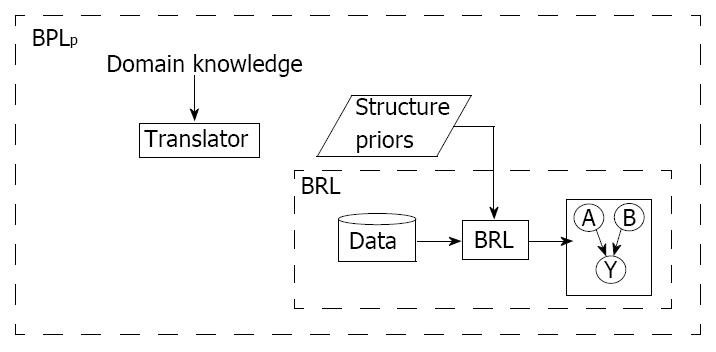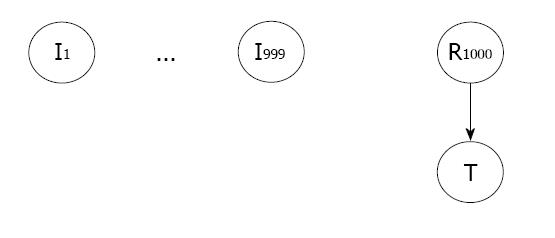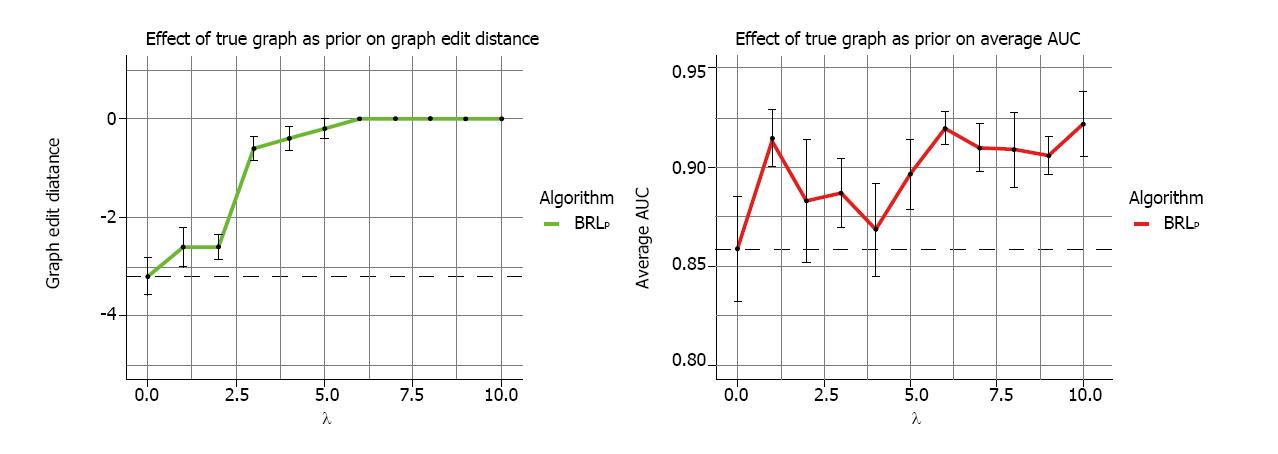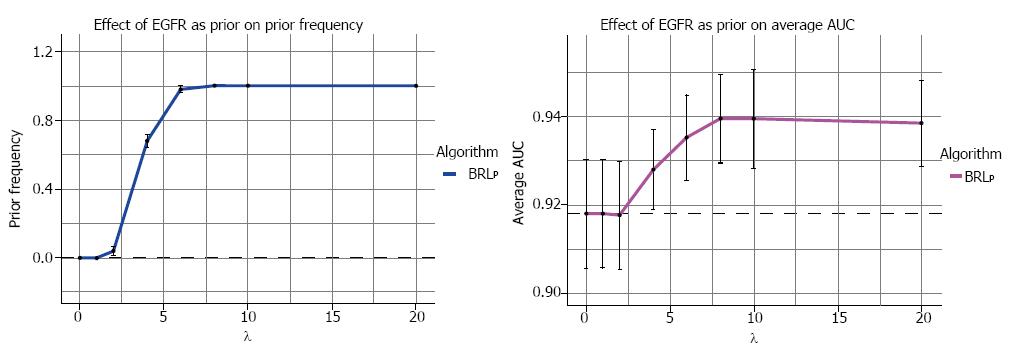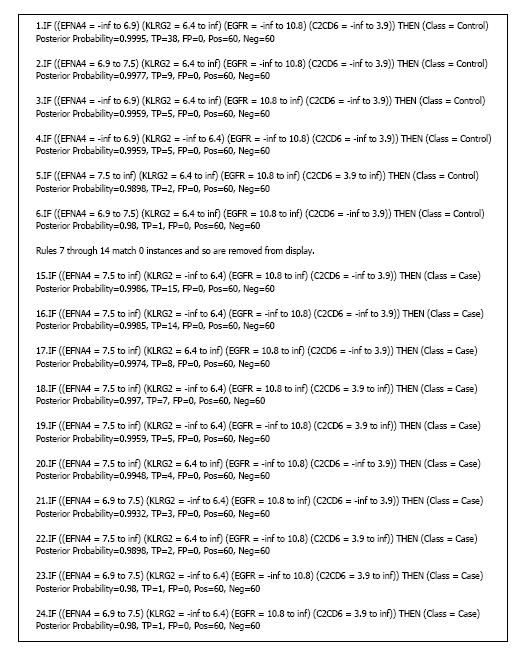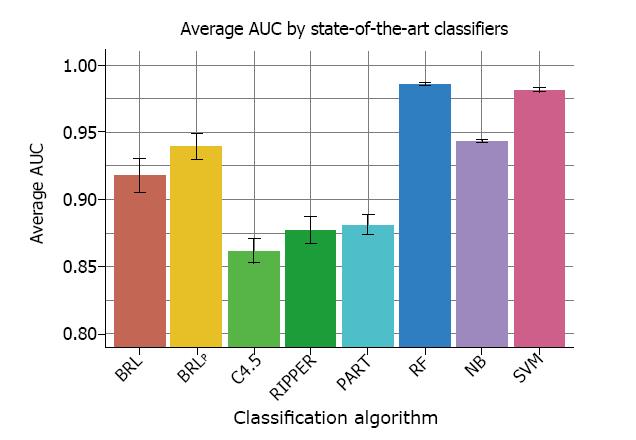Copyright
©The Author(s) 2018.
World J Clin Oncol. Sep 14, 2018; 9(5): 98-109
Published online Sep 14, 2018. doi: 10.5306/wjco.v9.i5.98
Published online Sep 14, 2018. doi: 10.5306/wjco.v9.i5.98
Equation 4 Math 4.
Equation 5 Math 5.
Equation 6 Math 6.
Figure 1 The Bayesian rule learning framework that can incorporate domain knowledge.
BRL: Bayesian rule learning.
Figure 2 The data-generating graph for the simulated data.
Equation 9 Math 9.
Figure 3 Evaluation metrics on Bayesian rule learning model learning with simulated data.
A: Graph edit distance between BRLp and true data-generating model; B: Area under the receiver operator characteristic curve of the BRLp model. BRLp: Bayesian rule learning with informative priors; AUC: Area under the receiver operator characteristic curve.
Figure 4 Bayesian rule learning generated rule model with λ=10 (highest average area under the receiver operator characteristic curve) on the simulated dataset.
Each rule has its posterior probability, the number of true positives (TP), false positives (FP), total number of examples that match the rules consequent target value (Pos), and total number that do not match the right hand side of the rule (Neg). The TP measures examples that correctly match the rules left and right hand sides, while FP measures examples that correctly match the rules condition or left-hand-side, but have a different consequent or right-hand-side.
Figure 5 Evaluation metrics on Bayesian rule learning model learning with real-world lung cancer prognostic dataset.
A: Prior frequency of the edge between epidermal growth factor receptor and T in BRLp model; B: Area under the receiver operator characteristic curve of the BRLp model. BRLp: Bayesian rule learning with informative priors; EGFR: Epidermal growth factor receptor; AUC: Area under the receiver operator characteristic curve.
Figure 6 Bayesian rule learning generated rule model with λ=8 (highest average area under the receiver operator characteristics curve) on the real-world lung cancer prognostic dataset.
TP: True positives; FP: False positives; Pos: Total number of examples that match the rules consequent target value; Neg: Total number that do not match the right hand side of the rule; EGFR: Epidermal growth factor receptor.
Figure 7 Comparison of area under the receiver operator characteristics curve achieved by Bayesian rule learning with state-of-the-art classifiers.
AUC: Area under the receiver operator characteristic curve.
- Citation: Balasubramanian JB, Gopalakrishnan V. Tunable structure priors for Bayesian rule learning for knowledge integrated biomarker discovery. World J Clin Oncol 2018; 9(5): 98-109
- URL: https://www.wjgnet.com/2218-4333/full/v9/i5/98.htm
- DOI: https://dx.doi.org/10.5306/wjco.v9.i5.98
















